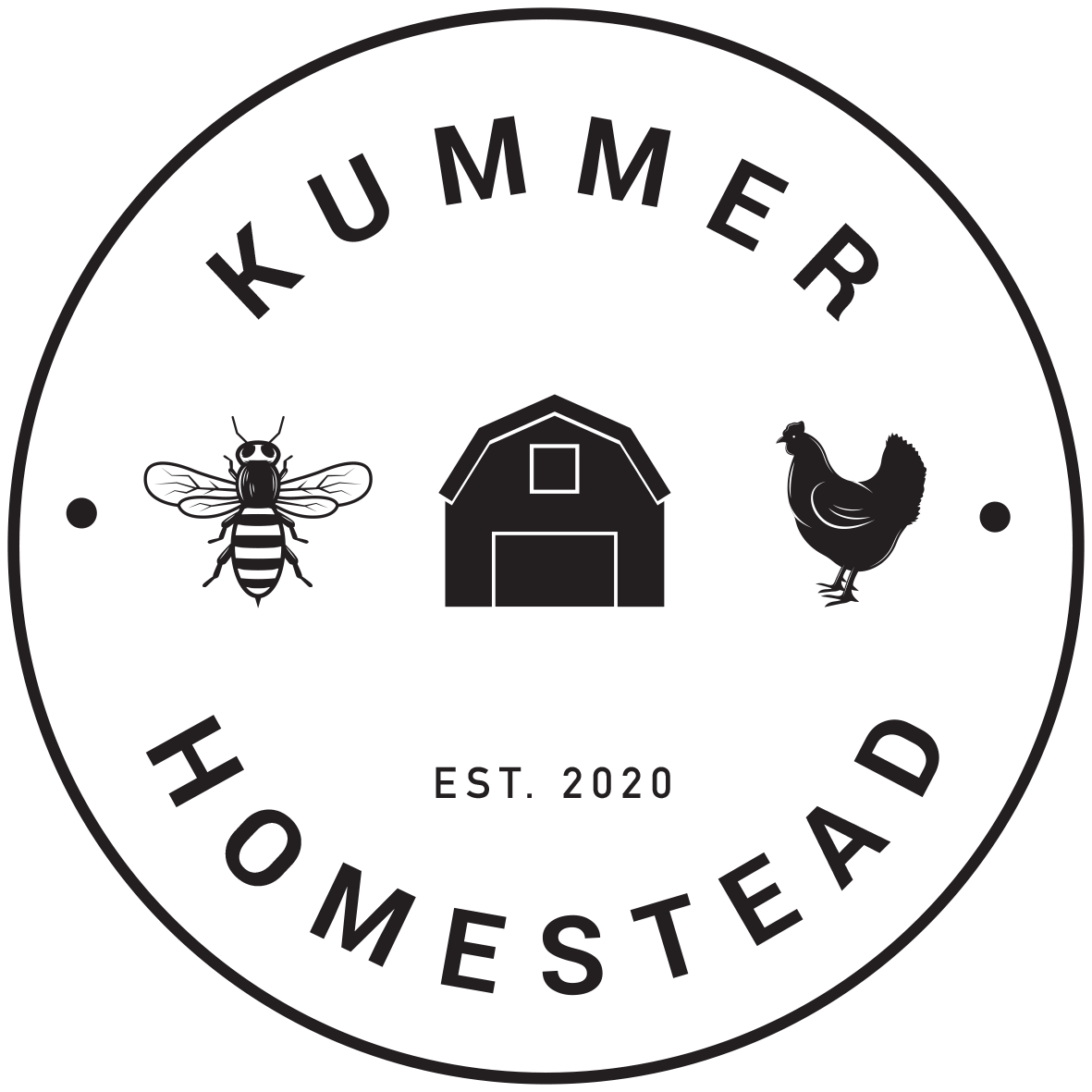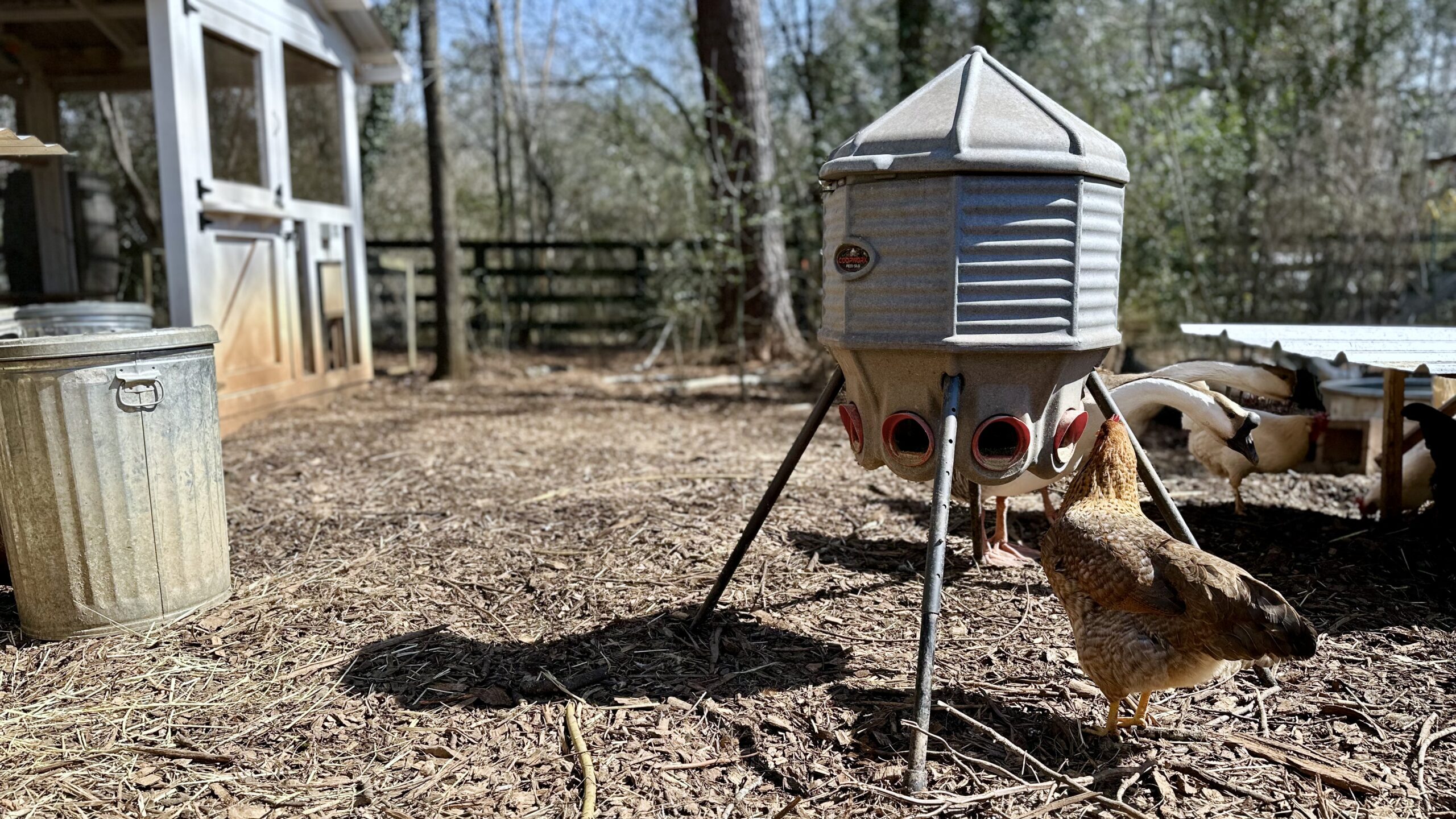After trying dozens of feeders for our flock of egg layers, we finally introduced the CoopWorx feed silo to help reduce feed waste and cut down on the amount of time we spend on morning chores.
In this review, I’ll tell you about our experience with CoopWorx, including some problems we encountered (and how we fixed them).
Why We Tried CoopWorx
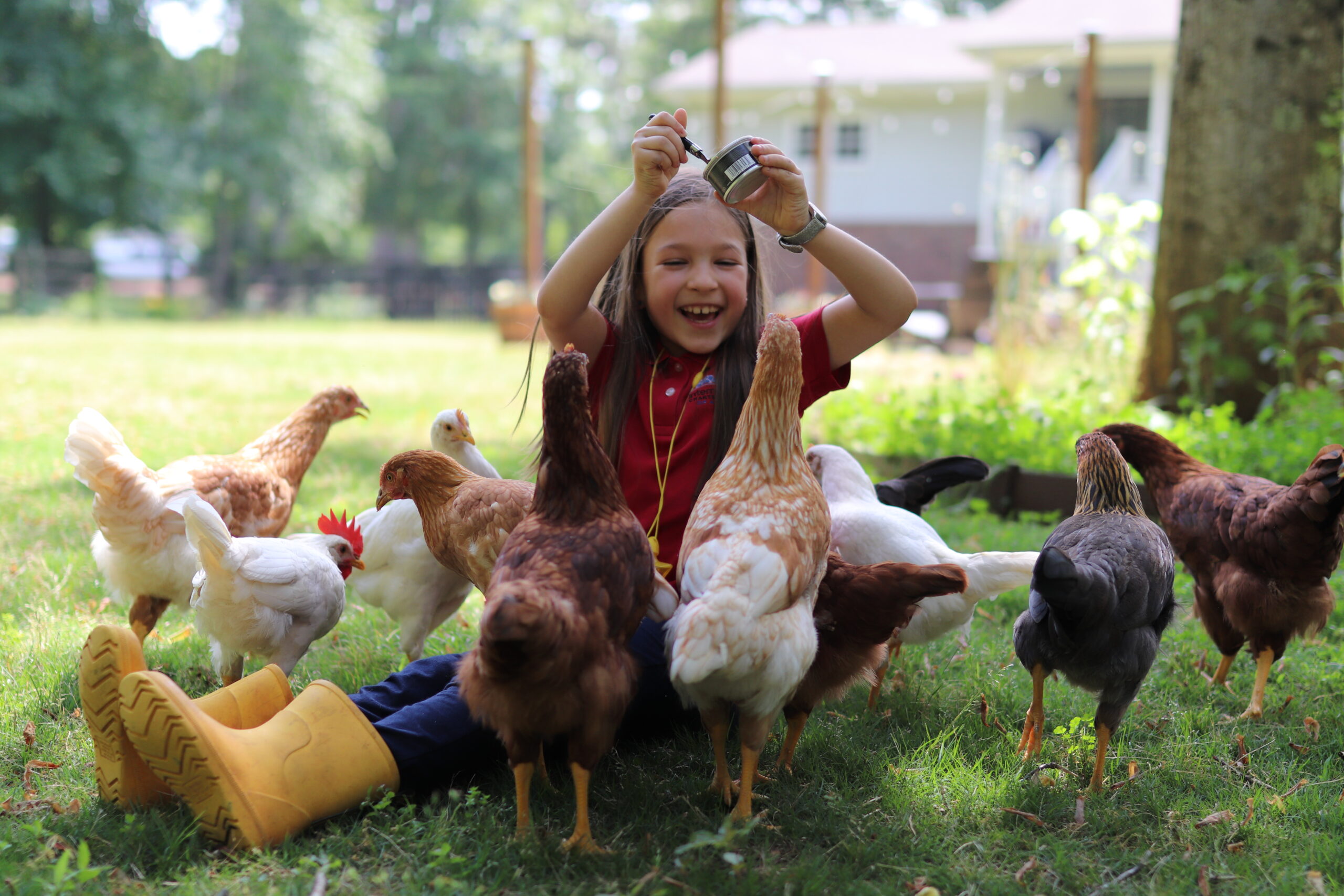
As of this writing, we pasture-raise 40 chickens for eggs and two African geese for protection on our one-acre homestead.
From the beginning of our chicken-raising journey in early 2021, we knew that we wanted to keep our daily chores to a minimum by leveraging as much automation as possible.
For example, we installed an automatic chicken door that opens in the morning and closes at night, and a 100-gallon gravity-fed water solution. We also invested in a step-on feeder that can hold feed for up to a week.
These automations dramatically decrease the time we spend on chores, and that’s an important consideration since we’re not full-time farmers. (I run a health and wellness blog and a dietary supplements business, and my wife homeschools our kids and takes care of the house.)
Over the years, we discovered that most of the traditional feeders we tried, including troughs and step-on feeders, produced a significant amount of feed waste, because the hens would scratch out or poop on the feed.
Other feeders were difficult to move or weren’t rodent or rain-proof, resulting in yet more feed waste.
The combination of those issues led us to look for a better alternative that would meet the following requirements:
- Reduce feed waste.
- Hold enough feed to last for several days.
- Keep the feed dry in inclement weather.
- Keep rodents out.
- Allow us to move feeders around quickly.
The CoopWorx feed silo checked off all of those requirements. So, let’s talk about how this feeder has been working for us.
CoopWorx Feed Silo Review
CoopWorx Pros:
- Rugged, rust-free design that has been holding up well to the elements.
- Feeding ports dramatically reduce feed waste.
- Highly-adjustable legs ensure compatibility with different chicken breeds and ages.
- Rodent-proof bases and port covers are available.
CoopWorx Cons:
- Significantly more expensive than other feeder options.
- You may need more than one silo, depending on your flock size.
- Heavy and difficult to move when full.
Design and Materials
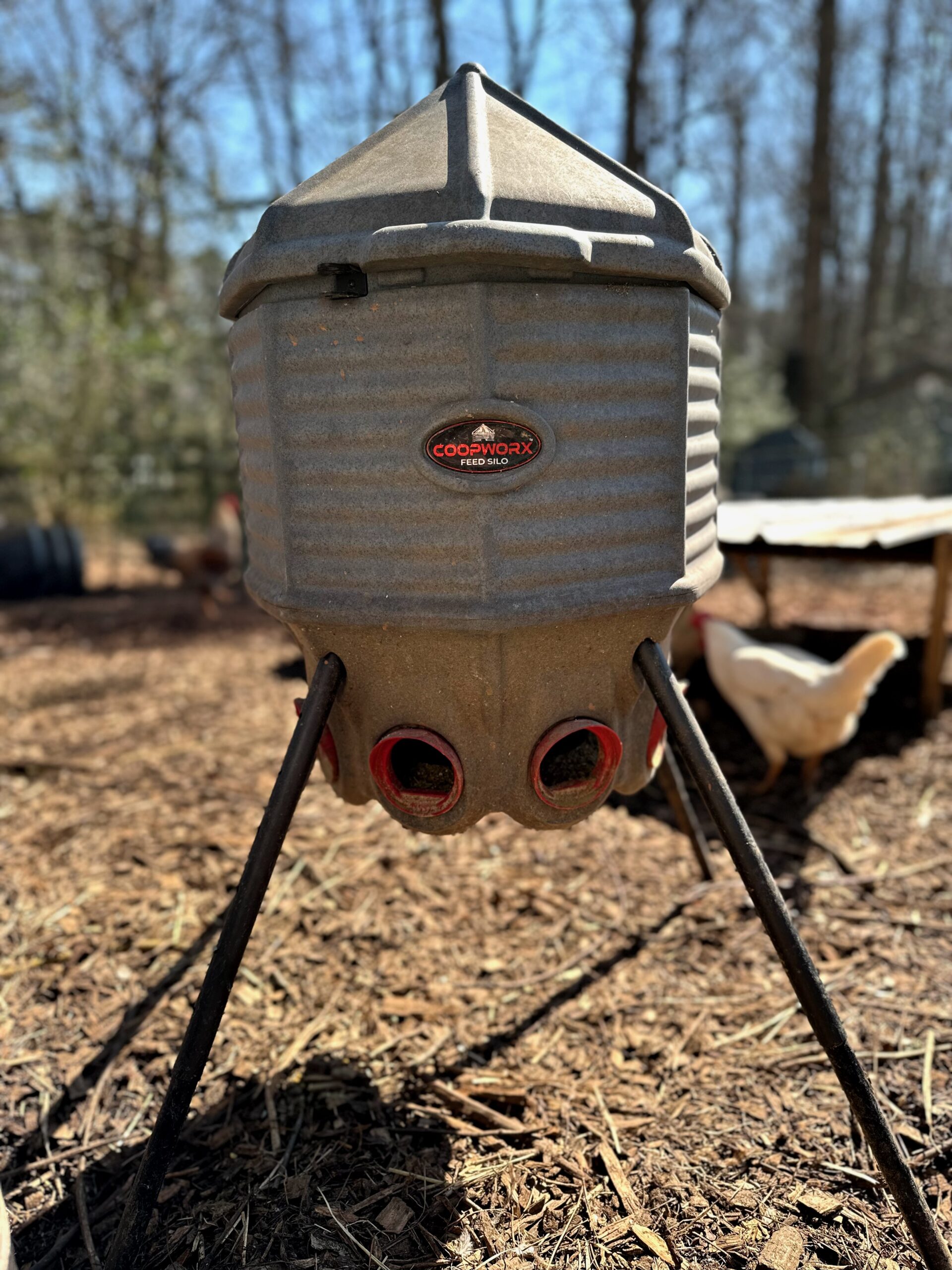
The CoopWorx feed silo has a rotomolded plastic body and lid, with rust-proof hinges. The lockable hinged lid is shaped in a way that prevents chickens from roosting on it (which can result in feed getting contaminated with manure), thereby preventing one of the main problems with traditional feeder designs.
The silo’s 80-pound capacity holds enough feed to last our 40 chickens for several days. The eight feed ports on the lower part of the silo keep the feed dry while reducing feed waste, because the hens have to stick their heads into them to eat.
To be fair, you can’t eliminate feed waste entirely because chickens tend to eat their favorite grains or seeds first, and they drop some of the less desirable parts of their feed using their beaks. However, in comparison to feeding troughs, or even our step-on feeder, we’ve noticed a significant decrease in feed waste with the introduction of the CoopWorx feed silo.
The other feature I love about this feeder is the availability of different leg and base options. We initially ordered the telescoping legs because they made it incredibly easy to adjust the height of the feed ports as our first flock grew.
However, we soon realized we were also feeding rodents that could climb up on the legs and get into the feed ports. As a result, we swapped out the telescoping legs with the adjustable steak mount, making it virtually impossible for rodents to get to the feed.
The downside of the steak mount is that it’s cumbersome to get out of the soil when you want to move the silo to a different position. CoopWorx must have recognized that issue, because the company later introduced an “X-Base Telescoping Post” that offers all of the advantages of the stake mount while preserving your ability to quickly and easily move the silo around.
The only situation in which you wouldn’t want to use the X-Base is if your ground is uneven or you’re on a slope. In that case, the individually-adjustable telescoping legs are probably your best bet.
It’s also worth mentioning that you can lock the hinged lid to prevent kids or larger animals from getting into the feed from atop, as well as to prevent the lid from accidentally opening (and thus exposing the feed to rain).
Capacity
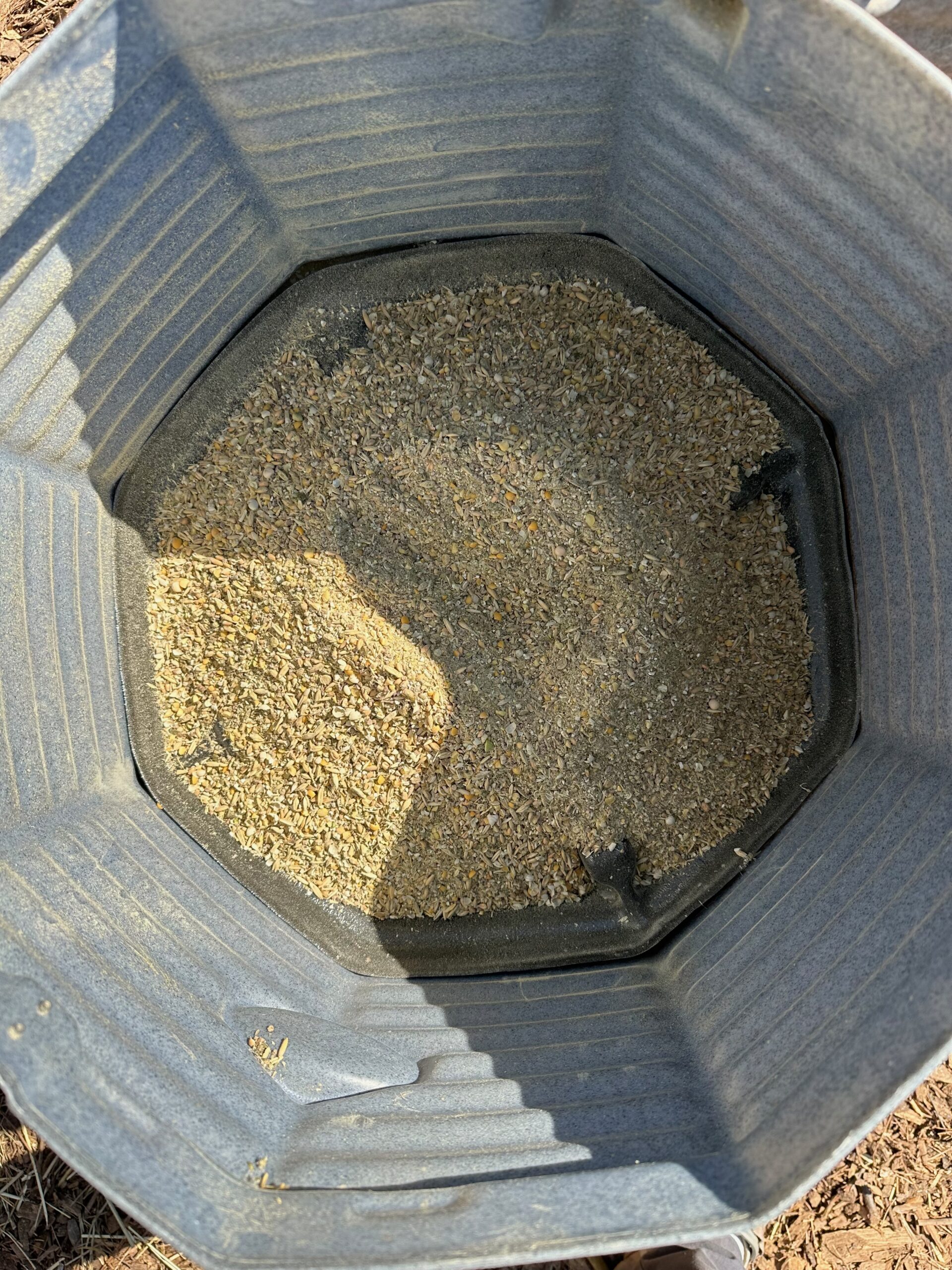
The CoopWorx feed silo is available in two sizes that hold either 40 or 80 pounds of feed. We had one 80-pound silo, which was working great when we had 16 chickens. However, when we doubled our flock size, we added more feeders to ensure sufficient access to feed for our 40 hens.
The clear advantage of the smaller silo is that you can lift and move it more easily when it’s full, depending on your body size and strength. I have no issues lifting and moving 100 pounds of silo and feed, but my wife, who is smaller and not as strong, would likely need help.
When choosing a silo size, be sure to think about how many feed ports you need for your flock. That depends on several factors, including your flock size and the breed of chickens you’re raising. The 80-pound silo has eight feed ports, while the 40-pound silo has just six ports.
Chickens, of course, have a pecking order. The birds highest up on the pecking order will get to eat first, and they might discourage hens that are lower on the totem pole from eating.
For this reason, we have several feeders in different locations to accommodate our flock of 40 chickens. If you have more than a handful of birds, you could consider getting a couple of 40-pound silos instead of one large one. (Two 40-pound silos would give you a total of 12 ports, or 50% more than a single 80-pound silo.)
That way, you can separate the individual silos while increasing the number of feed ports relative to the amount of feed you can offer your hens.
Bases and Accessories
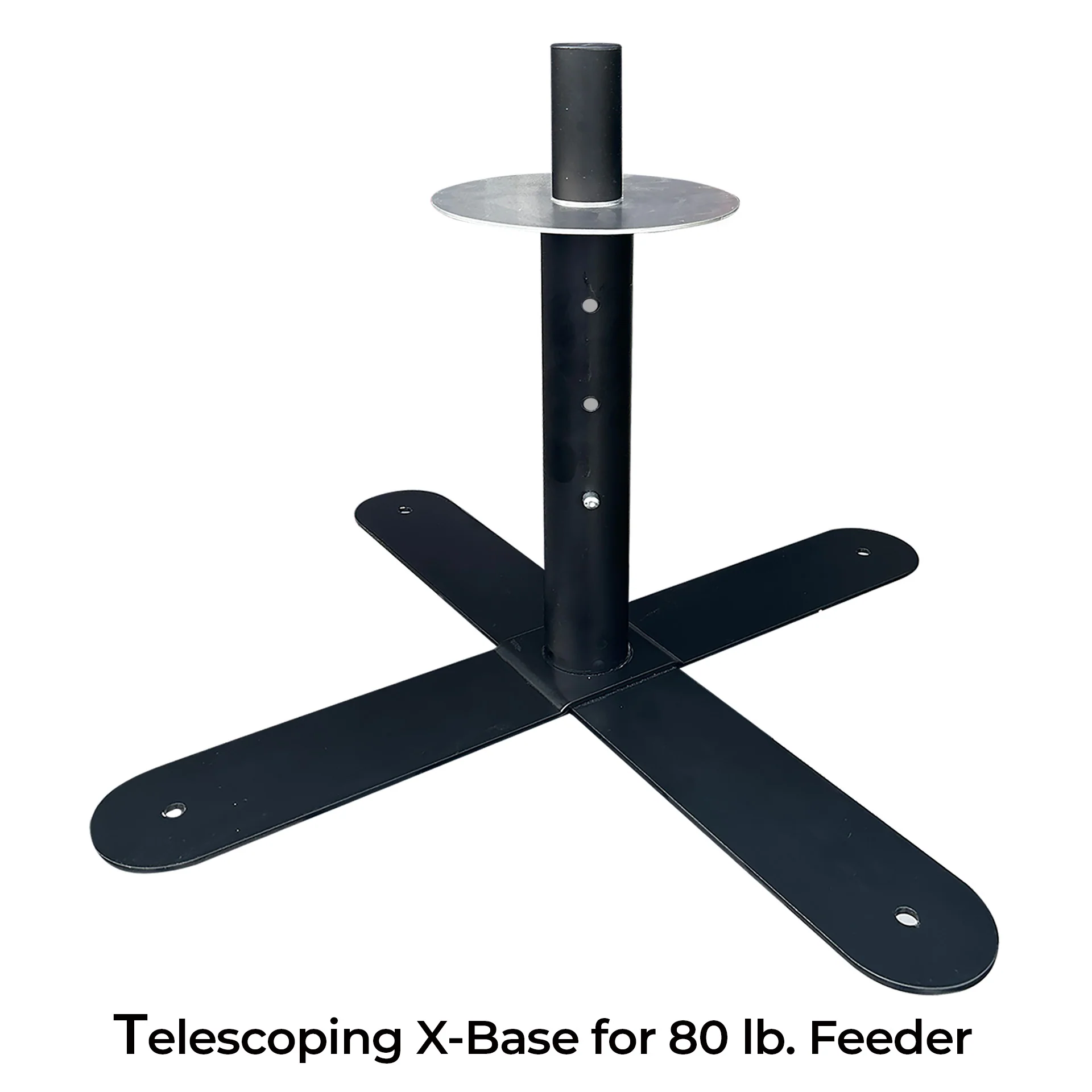
As I briefly mentioned above, the CoopWorx feed silo is available with three different base options, including:
- Individually-adjustable telescoping legs: The best choice for uneven terrain. They’re also easy to adjust (one by one) even when the silo is filled with feed.
- Stake mount post: Works great on uneven terrain and provides the most secure mounting option. The only downside is that it makes moving the silo cumbersome because you have to dig out the stake first.
- X-Base: An excellent option if you have an even terrain and rodents stealing your feed. We’re considering upgrading our silos to the X-Base.
In addition to the various bases, CoopWorx also offers feed port covers to keep rodents out if using the stake mount post or X-Base isn’t an option due to uneven terrain. The feed port covers might also work to deter raccoons from eating your feed.
We had a raccoon issue in the past (before CoopWorx introduced the feed port covers) but quickly rectified the problem by trapping, dispatching and eating the raccoon.
Pricing
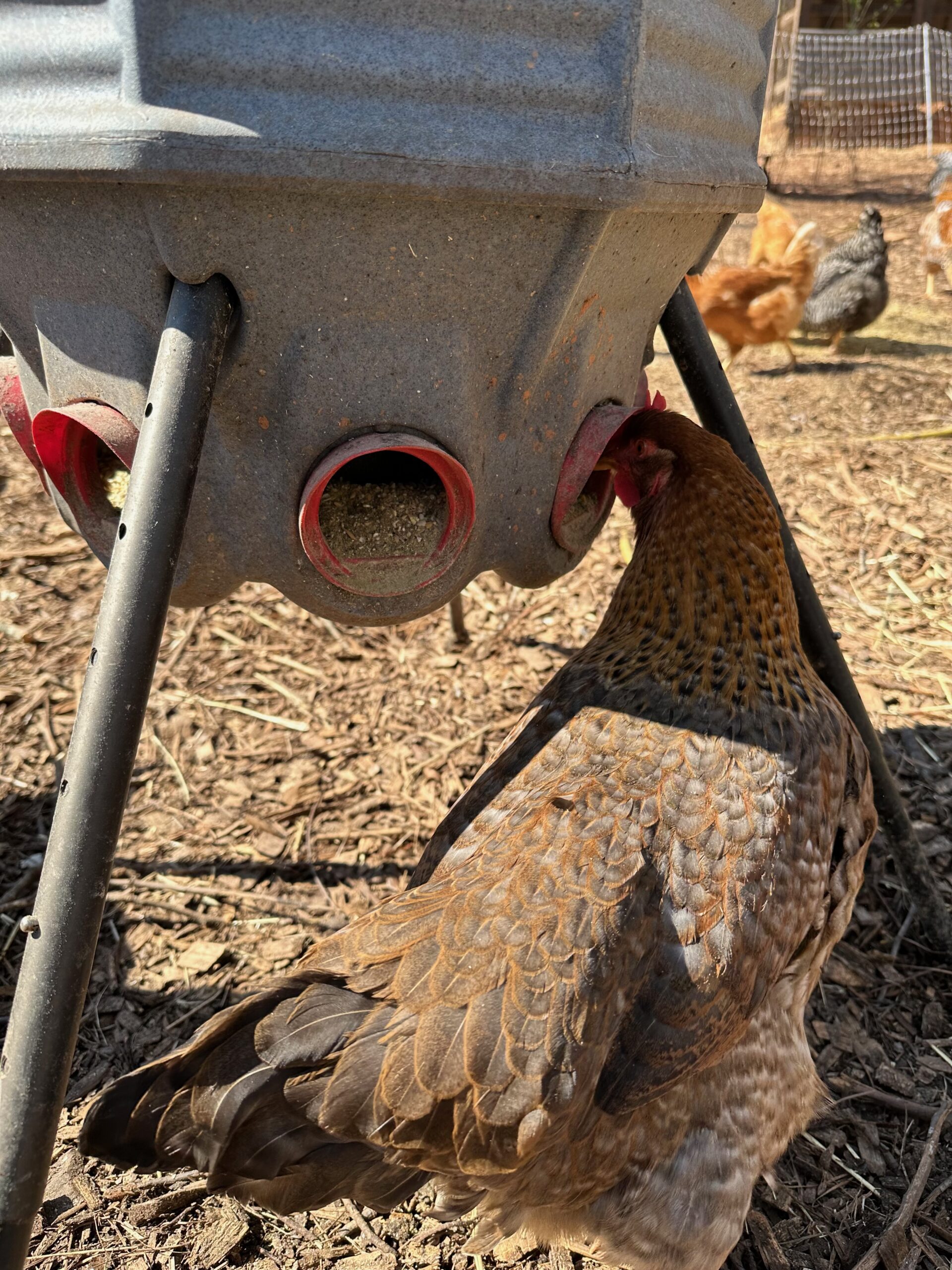
The biggest downside to the CoopWorx feed silo is its price tag. Depending on the size you pick, you’ll spend somewhere between $195 and $225. If you use the discount code KUMMER at checkout, you’ll get 5% off your order.
That’s not cheap, but I think it’s worth it, considering the quality of materials used and its many benefits that can save you both feed and time.
CoopWorx is a family-owned business, and all its products are made in the United States. Considering that my wife and I also run a family-owned company (selling 100% grass-fed beef organ supplements), we support similar businesses whenever possible.
Customer Support
Post-purchase experience is essential for me, especially if I encounter issues with the purchased product.
Shortly after buying the CoopWorx feed silo, I noticed that something was stealing our feed overnight. I suspected a squirrel or another rodent, so I contacted CoopWorx to ask for advice. Tom Carter, who founded CoopWorx with his daughter Kate, immediately responded and offered to send me a stake mount post, making it virtually impossible for rodents to access the feed ports.
Later, I discovered it wasn’t rodents but rather a raccoon that was feasting on our chicken feed. When I reported back to Tom, he offered to send me some feed port covers they were developing. I didn’t take him up on that offer because we decided to dispatch the raccoon instead, and we haven’t had another issue since then.
Fast forward to February 2024, when I noticed that feed would occasionally trickle out of some of the feed ports. I reached out to Tom again, and he responded within a few minutes, offering an analysis of the issue and even replacing the silo if I couldn’t fix the problem on-site.
I share all this so you know that CoopWorx stands behind its products, and they’re willing to do whatever it takes to make things right in the case of a problem. I appreciate that, and it’s a big reason why we’ll continue investing in CoopWorx products for our homestead.
Problems We Encountered

I recently discovered that there was feed trickling out of the feed ports when we moved or refilled the silo. Upon inspection and with the help of Tom, I found that we might have been too rough with the telescoping legs, causing them to splay out and pull the funnel on the inside away from the silo wall. That opening allowed feed to escape and trickle out of the feed ports.
The lesson we learned from that incident is to be more careful when using telescoping legs, and that on our relatively even terrain, the X-Base (which attaches to the center of the silo) might be the better choice.
The good news is that CoopWorx immediately offered to replace the silo, and I’m hoping they’ll consider updating the silo’s design to reduce the chances of such issues occurring in the future.
Frequently Asked Questions
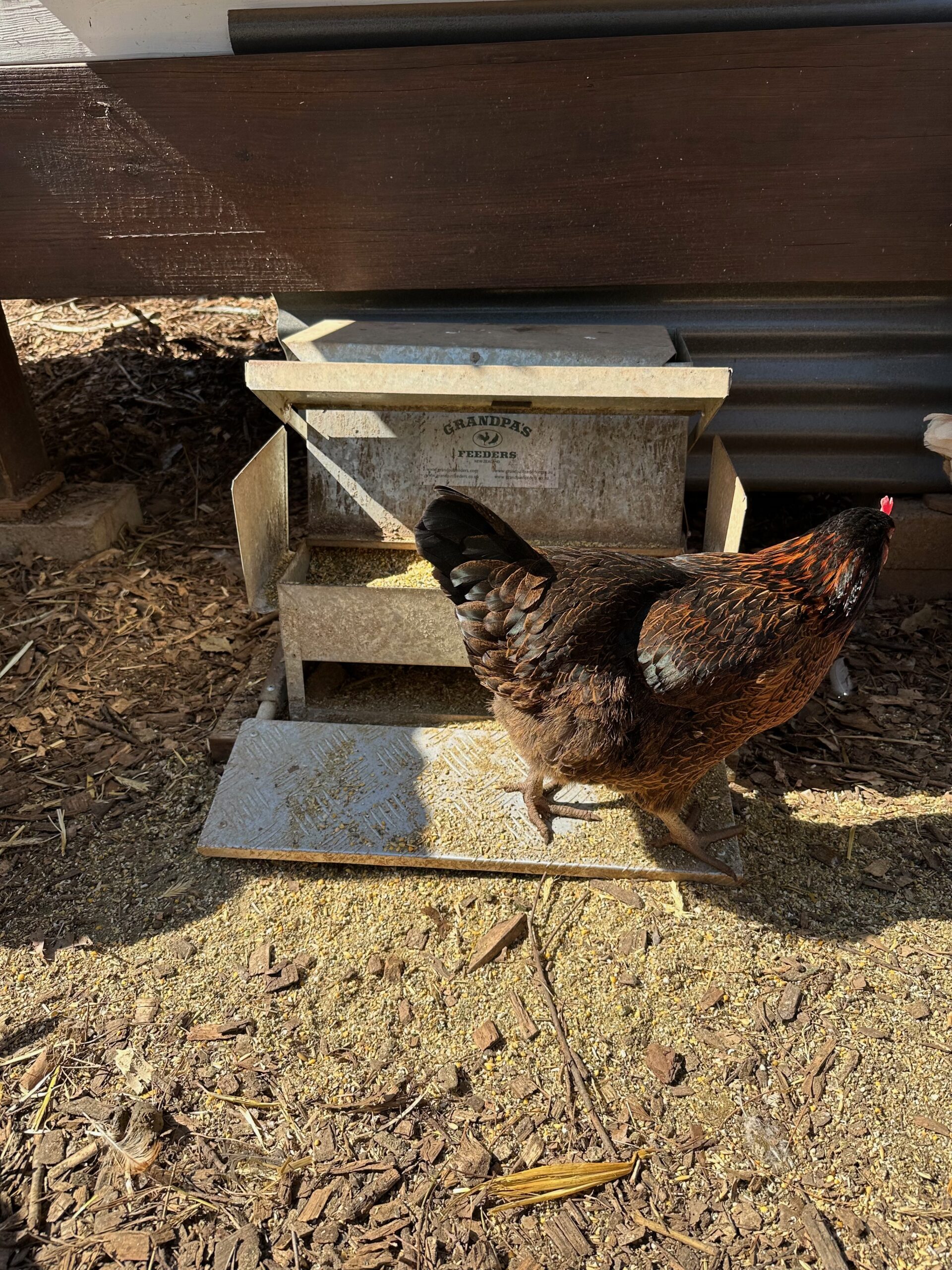
Yes, the CoopWorx feed silo protects feed from getting wet, even during heavy rainfall. Of course, if the rain comes sideways, the feed exposed in the feed ports might get wet while the bulk of the feed inside remains dry.
The best way to prevent rodents from accessing the feed inside the silo is to use the single-post stake mount or X-Base. If you use the telescoping legs, certain rodents might be able to climb up the legs and get into the feed ports. If that happens, you can use the feed port covers to close the feed ports at night.
You can certainly use the CoopWorx feeder inside a mobile chicken tractor if you want to raise meat birds, but I’m not convinced it’s the ideal solution for several reasons, including the following:
The 80-pound feed silo has only eight feed ports, which might not be enough if you raise 10 or more meat birds. While feed port access is less of an issue with pasture-raised birds that are out foraging most of the day, meat bird breeds such as the Cornish Cross don’t move or forage much. Instead, they constantly eat and will usually stay close to the feed.
In a stationary setup (e.g., an enclosed run), you can probably get away with multiple feed silos (depending on the size of your flock), but that might get expensive in comparison to using long feeder troughs that can accommodate a large number of birds.
If you raise your birds in a mobile chicken tractor, I’d also argue that using a suspended feed trough is much more convenient because you can move the tractor without worrying about the feeder.
If you use a CoopWorx feed silo, you’d have to move it in and out of the tractor every time you want to move your chickens to a fresh patch of pasture.
However, if you’re planning on rotating egg layers using a mobile chicken tractor, I would consider using a feed silo as long as it’s positioned outside the tractor. That way, you can move the tractor and the feed silo separately.
CoopWorx offers two different water solutions, including an eight-gallon water silo and a version that includes a float valve you can connect to your garden hose to keep the silo filled at all times.
We’re currently using stationary rain barrels with attached nipples to provide fresh water for our chickens, but we’re considering transitioning to CoopWorx water silos because they’re so easy to move.
That makes them an attractive water solution for the warmer months when we rotate our chickens across different areas of our backyard.
The other reason why I’m considering getting a couple of the AutoFull silos is that I could use them in combination with the Freeze Miser to prevent the water inside the silo from freezing in winter.
CoopWorx Feed Silo: Final Verdict
We’ve tried dozens of feeders over the past few years and ran into issues with most of them. The biggest issue we’ve experienced is feed waste.
Considering that we use relatively expensive, organic, low-PUFA feed without corn or soy, wasted feed quickly becomes a bottom-line issue.
Add in the time savings achieved by not having to refill the feeder every morning, and you realize why the CoopWorx feed silo is worth every penny.
What feeder and water solutions have you found to work best? Let us know in the comments!
